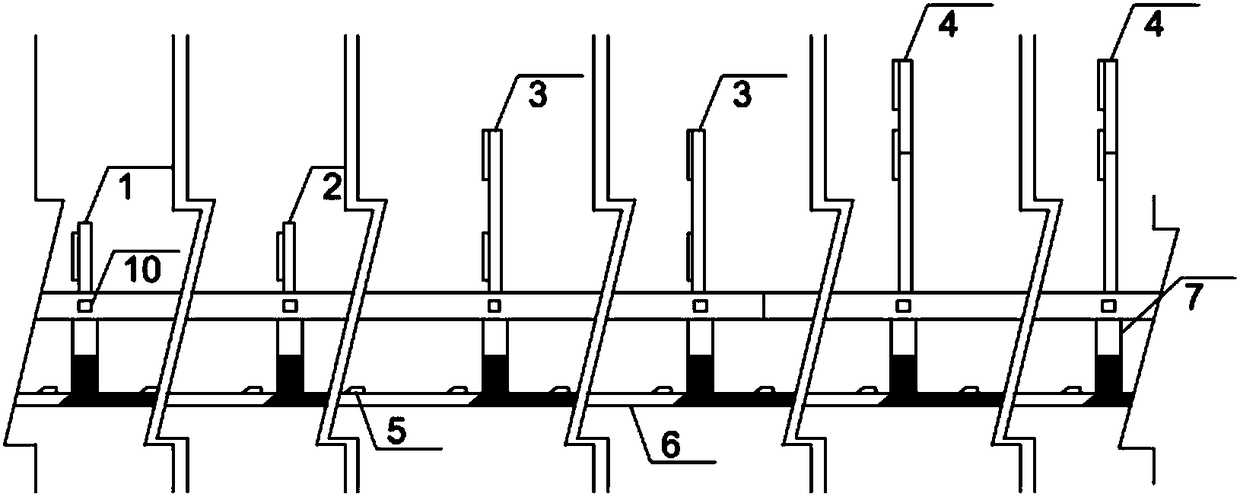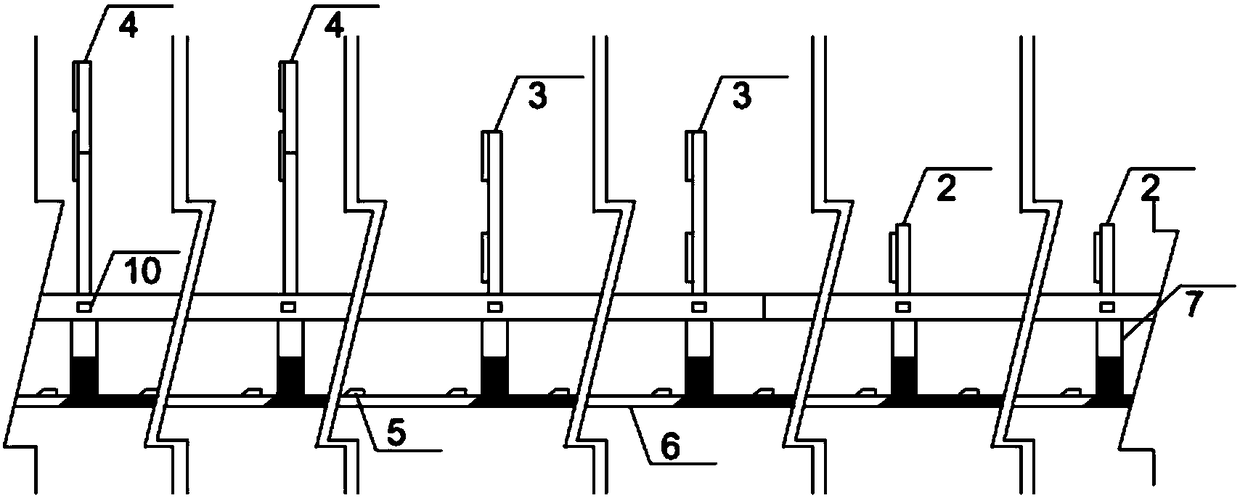Expressway flow-splitting area speed controlling and advanced flow-splitting implementation method based on traffic conflicts
A highway and traffic conflict technology, applied in traffic signals, roads, roads, etc., can solve problems such as insufficient visibility, late drivers changing lanes and diversion, etc., to improve visual depth, reduce traffic conflicts, and achieve quick results. Effect
- Summary
- Abstract
- Description
- Claims
- Application Information
AI Technical Summary
Problems solved by technology
Method used
Image
Examples
Embodiment Construction
[0038]In order to make the object, technical solution and advantages of the present invention clearer, the present invention will be further described in detail below in conjunction with the accompanying drawings and embodiments. It should be understood that the specific embodiments described here are only used to explain the present invention, not to limit the present invention.
[0039] The present invention provides a method for realizing speed control and early diversion in expressway diversion area based on traffic conflict, such as figure 1 As shown, it mainly includes the following:
[0040] At 1km before the diversion nose, a diversion indicator sign 1 is set outside the guardrail on the right side of the forward direction, and a diversion triangle area in front of the diversion nose is marked with a prohibition of merging marking 8;
[0041] Within the range of 1km to 500m in front of the diversion nose, set up a single-layer line of sight guidance sign 2 outside th...
PUM
 Login to View More
Login to View More Abstract
Description
Claims
Application Information
 Login to View More
Login to View More - R&D
- Intellectual Property
- Life Sciences
- Materials
- Tech Scout
- Unparalleled Data Quality
- Higher Quality Content
- 60% Fewer Hallucinations
Browse by: Latest US Patents, China's latest patents, Technical Efficacy Thesaurus, Application Domain, Technology Topic, Popular Technical Reports.
© 2025 PatSnap. All rights reserved.Legal|Privacy policy|Modern Slavery Act Transparency Statement|Sitemap|About US| Contact US: help@patsnap.com



